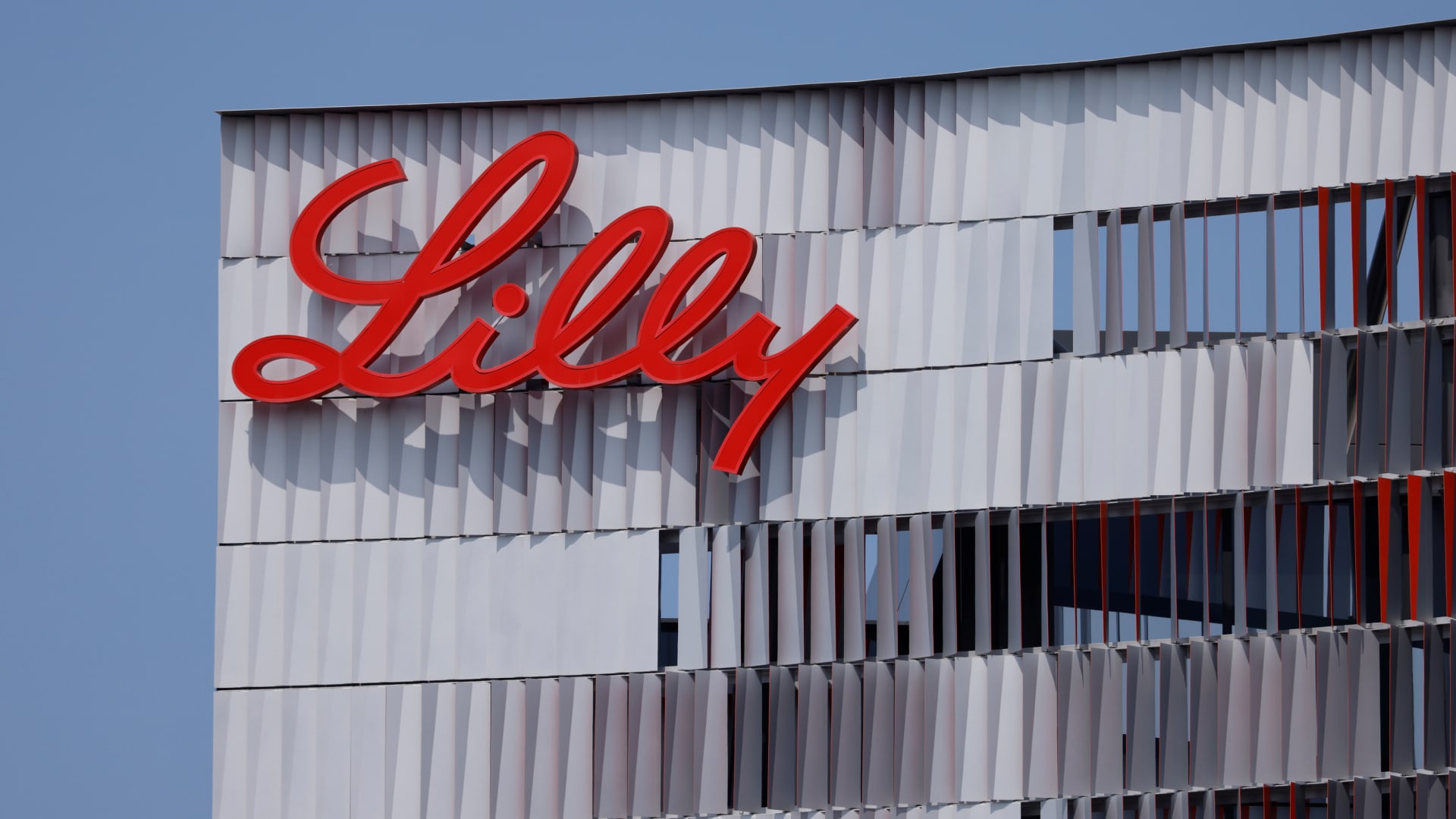Eli Lilly on Tuesday reported first-quarter adjusted profit that topped Wall Street’s expectations and hiked its full-year guidance on strong sales of its blockbuster diabetes drug Mounjaro and newly launched weight loss treatment Zepbound.
The drugmaker now expects full-year adjusted earnings of $13.50 to $14.00 per share, up from a previous guidance of $12.20 to $12.70 per share. Eli Lilly also expects revenue for the year to come in between $42.4 billion and $43.6 billion, an increase of $2 billion at either end of the range.
Analysts surveyed by LSEG expected full-year adjusted earnings of $12.50 per share and sales of $41.44 billion.
The company said the boosted guidance is in part due to “greater visibility” into its production expansion of Zepbound, Mounjaro and similar drugs for the rest of the year.
The results and guidance raise reflect Zepbound’s first full quarter on the U.S. market after winning approval from regulators in early November. The drug reported $517.4 million in sales for the first quarter, even as most doses of the drug slipped into shortages in the U.S. that are expected to last through June.
Analysts say the weekly injection could post more than a billion dollars in sales in its first year on the market and potentially become the biggest drug of all time.
Eli Lilly noted that demand for Mounjaro and Zepbound — treatments known as incretin drugs, which mimic hormones produced in the gut to suppress a person’s appetite and regulate their blood sugar — outpaced increases in supply during the quarter.
The company said it is continuing to expand its manufacturing footprint, with the most significant production increases expected in the second half of the year.
“Our top priority is making more product, and we’re doing everything we can to do that,” Eli Lilly CEO David Ricks said in an interview on CNBC’s “Squawk Box.” “We’re ramping that aggressively. But it’s capital intensive, it’s technically complex and highly regulated.”
Ricks added that Mounjaro and Zepbound are among the “most complicated medicines we’ve ever made.”
Here’s what Eli Lilly reported for the first quarter compared with what Wall Street was expecting, based on a survey of analysts by LSEG:
- Earnings per share: $2.58 adjusted vs. $2.46 expected
- Revenue: $8.77 billion vs. $8.92 billion expected
Eli Lilly posted a net income of $2.24 billion, or $2.48 a share, for the first quarter. That compares with a profit of $1.34 billion, or $1.49 a share, a year earlier.
Excluding one-time items associated with the value of intangible assets, among other adjustments, the company posted a per-share profit of $2.58 for the first quarter of 2024.
The pharmaceutical giant booked first-quarter revenue of $8.77 billion, up 26% year over year.
Shares of Eli Lilly jumped almost 7% in premarket trading Tuesday. They’re up 26% this year after jumping almost 60% in 2023 due to the insatiable demand for the company’s weight loss and diabetes drugs. That’s despite their hefty price tags, spotty insurance coverage and intermittent supply shortages.
With a market cap of about $700 billion, Eli Lilly is the largest pharmaceutical company based in the U.S.
Mounjaro, Trulicity results
Both of the company’s top-selling diabetes drugs missed Wall Street’s expectations for the first quarter.
Mounjaro brought in $1.81 billion in revenue in the first quarter, more than triple the $568.5 million it booked during the year-earlier period. However, analysts were expecting sales of $2.11 billion, according to StreetAccount.
Eli Lilly said higher prices for Mounjaro helped drive up revenue, specifically citing decreased use of savings card programs for the drug in the U.S.
But the company said those savings card dynamics should “cease to have a notable effect on realized price comparisons” because the $25 monthly coupon for patients who don’t have insurance coverage for Mounjaro expired in June.
Meanwhile, sales of Eli Lilly’s older diabetes drug Trulicity plummeted 26% during the first quarter to $1.46 billion. That’s lower than the $1.59 billion that analysts were expecting, according to StreetAccount.
In the U.S., declining sales were primarily due to supply constraints and competition with other diabetes treatments, according to Eli Lilly. Revenue outside the U.S. also decreased, driven by lower demand and realized prices, as well as tight supply.
Other drugs miss expectations
Revenue growth was also driven by sales of Eli Lilly’s breast cancer pill Verzenio, which rose 40% to $1.05 billion for the quarter due to increased demand.
Those results came in under analysts’ expectations, however, which called for $1.11 billion in sales for the period.
Sales of Jardiance, a tablet that lowers blood sugar in Type 2 diabetes patients, climbed 19% to $686.5 million for the first quarter. Analysts had expected $718.3 million in sales from Jardiance.
Jardiance, which Eli Lilly shares with Boehringer Ingelheim, is among the first 10 drugs selected to face price negotiations with the federal Medicare program.
